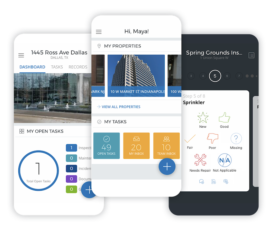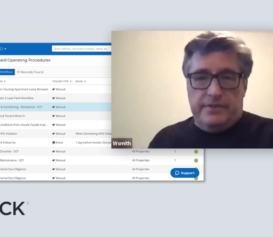What exactly is a retrospective?
Company retrospectives aren’t just a hot business trend, adopted from the tech world. They’re a key method for taking a look at what’s working, what didn’t work, and what needs to be done going forward to achieve success in your business.
Tech company Retrium noted the book Agile Retrospectives: Making Good Teams Great, summarizing that “experts Diana Larsen and Esther Derby identify 6 benefits to retrospectives:
- Improved Productivity
- Improved Capability
- Improved Quality
- Increased Capacity
- Increased Empowerment
- Increased Enjoyment”
In that context, it seems like a no-brainer for every organization across disciplines to embrace retrospectives, and use learnings from them to power future plans. This is especially true for property operations teams, where small tweaks to operational processes can have huge impacts across your portfolio.
Retrospectives can happen in many forms, but typically occur as regular meetings with the goal of quickly implementing actions based on “lessons learned.” But teams working in a fast paced environment (hello, property operations) might not have time to sit down together and pore over every detail of a project.
So how do we solve that problem? Before we get into how teams are measuring their successes and challenges, let’s touch on why it’s so important.
Why Are Retrospectives Important For Property Operations?
Let’s look back at the six general benefits of retrospectives. Imagine your team operated with increased productivity and capacity, without sacrificing quality. Imagine if alongside these benefits, quality also improved? What could that do for your business? Possibly the following:
- Decreased resident churn and increased satisfaction
- The ability to expand your portfolio without significantly increasing staff size
- Higher team morale from celebrating wins and fixing processes that aren’t working
That “celebrating wins” part may seem trivial, but it’s especially important after a year like 2020. Recognizing teams and individual members of your organization who executed with excellence is critical for keeping morale high and reinforcing great behavior company-wide (which, in turn, fosters a well-oiled working environment).
Hosting retrospectives can have a great impact on your organization. But how do property management teams make retrospectives happen in real life?
Building Retrospectives Into Existing Routines
Your “retrospective routine” doesn’t have to be perfect to be effective and get the results you want. Start small, and find ways to incorporate retrospectives (even brief ones) into your team’s routines:
- Does your team meet regularly to review upcoming work? If so, can you devote ten minutes to a retrospective of last week’s work?
- If your entire operations team can’t meet, can each property team host a retrospective and report back on key findings?
- Can you spare time for monthly meets instead of more frequent retrospectives?
- Could you host retrospectives after a big, complex project (like renovation of a unit block, or installation of new HVAC equipment across several properties)?
During your retrospectives, it’s important to get perspective from all the different folks on your team involved in the work or project – everyone from maintenance techs to PMs to back office staff. It’s also important to back up individual viewpoints with baseline data and reporting.
Use Performance Data To Power Your Retrospectives
Retrospectives can often be a combination of anecdotal stories (“Here’s what I experienced working on this project…”) and data-driven results (e.g., how long did it take, what was completed and what wasn’t). Measuring the latter can sometimes be a missing piece of the puzzle for property operations teams. But it doesn’t have to be.
Just like a professional runner times their sprints and adjusts their practice, professional property ops teams should measure how they’re working so they can tweak their methods in the future.
But how do you actually measure work output? True, you can’t press a button on a stopwatch. But you can automatically collect information on how your team is working using the tools they’re working with.
If you’re evaluating inspection apps or operational platforms, you should definitely ask the following questions about data capture and reporting:
- What kind of reporting do you offer for things like inspections, maintenance logs, or other routine work we perform?
- Is it easy for us to compare performance across dates (month to month, for example), properties, or property groups?
- Are we able to see which routines are completed better or faster than others?
Ensuring the teams your tools use everyday track performance data is the quickest way to measure output without creating additional work for you, or for you team on the ground.
Why Is Access To Performance Data Important?
Without actual numbers, it’s hard to determine the why of something – for example, why are local law violations down at one building, and not another? Is it because of their unit count, their location, the age of the property’s equipment? If you had data showing the inflection point – when violations actually started decreasing – and compared that to similar properties, you could determine that a recent change in staff processes led to a net positive effect.
Conversely, performance data also helps you identify work practices that aren’t leading to the results you want. If one building is finishing less unit inspections over longer periods of time, accessible data can help you understand why. Is that team’s process different than inspections at another property or set of properties? Is there something different that needs to be taken into account at this building? Data gives you the foundation so you can fix what’s broken and build on a successful, executable plan.
InCheck users have access to work performance data on-demand, making retrospectives and planning easier and more efficient. Check out our post for details on how teams are leveraging the Executive Summary to work smarter, not harder.
Retrospectives are just one part of your overall business strategy. But having a holistic picture of what your team is doing, and what the end results are, will help you build the right path for continued success.




